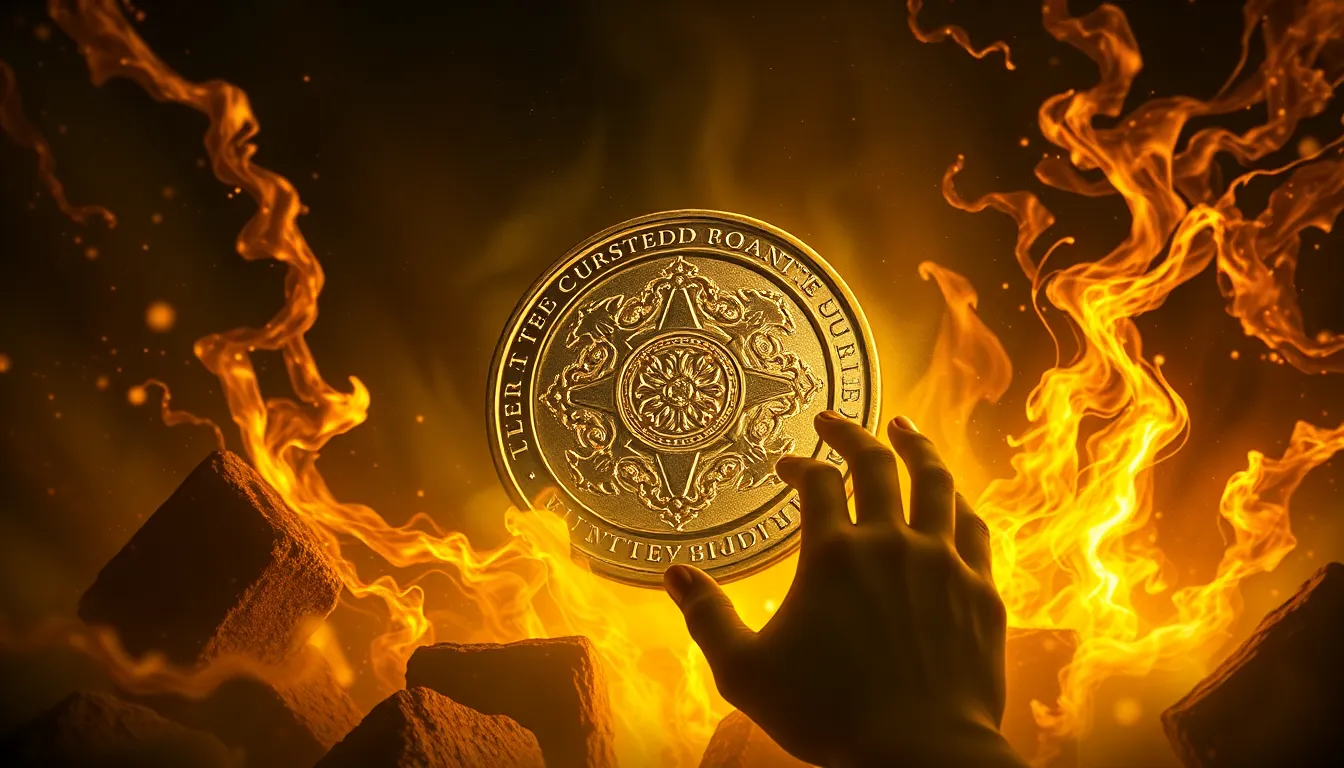The Cursed Coin: Myths of Greed and Misfortune
Introduction: The Allure of Wealth and Its Dark Side
The desire for wealth has been a driving force throughout human history, influencing decisions, shaping cultures, and even determining the course of nations. From the glittering treasures of ancient empires to the modern stock market, the pursuit of riches captivates individuals and communities alike. Yet, with this allure comes a darker narrative: the stories of cursed objects—particularly coins—that warn of the perilous consequences of greed.
The Historical Context of Cursed Coins
Ancient civilizations often imbued objects with spiritual significance, believing that certain items could carry blessings or curses. Cursed coins, in particular, have a rich history across various cultures. Cultures such as the Egyptians and Romans had their share of superstitions involving money, often associating wealth with both fortune and misfortune.
- The Roman Empire: Coins were sometimes believed to carry the spirits of the deceased, leading individuals to avoid certain coins that were said to be cursed.
- Medieval Europe: The notion of cursed coins became prevalent, particularly during times of great economic hardship, where individuals attributed their misfortunes to specific coins that brought ill luck.
Examples of cursed coins include the infamous “Wicked Widow’s Coin,” a silver piece said to bring death to its possessor, and the “Cursed Spanish Dollar,” which was rumored to have caused destruction to its owners.
Folklore and Legends: The Tales Behind Cursed Coins
Throughout history, numerous myths and legends have emerged surrounding cursed coins. These tales often serve as cautionary stories, illustrating the dangers of greed and the importance of humility.
- The Coin of the Cursed Pirate: According to legend, a pirate buried his treasure but cursed the coins, causing all who found them to meet tragic ends.
- The Golden Coin of Doom: A tale from ancient Greece tells of a golden coin that brings prosperity but also leads to the downfall of its owner.
These stories often reflect the moral lessons of their times, warning against the excesses of greed and the inevitable consequences that follow.
The Psychology of Greed: Why Cursed Coins Captivate Us
Greed is a powerful motivator that can cloud judgment and lead to destructive behaviors. The concept of a cursed coin plays into this psychological dynamic, serving as a metaphor for the pitfalls of avarice. The allure of wealth, juxtaposed with the fear of misfortune, creates a captivating narrative that resonates deeply with human nature.
This duality of desire and caution can be seen in various forms, from literature to personal experiences, reinforcing the idea that the pursuit of wealth often comes with unforeseen costs.
Case Studies: Famous Cursed Coins and Their Stories
Numerous cursed coins have become legendary, each with its own tale of misfortune. Here are a few notable examples:
- The Black Prince’s Ruby: A large red spinel gemstone that has adorned crowns and royal regalia, its owners have been plagued by war, betrayal, and death.
- The Cursed Coin of the Lost Treasure: A coin believed to belong to a famous pirate, it has led to the demise of several treasure hunters who sought it out.
These stories often intertwine with historical events, adding layers of intrigue to the narratives surrounding these cursed objects.
Cursed Coins in Modern Culture: Films, Literature, and Media
The fascination with cursed coins has transcended time, finding a place in modern culture. Films, literature, and video games frequently incorporate the concept of cursed coins, often portraying them as objects of great desire that lead to dire consequences.
- Films: Movies like “The Curse of the Black Pearl” explore the idea of cursed treasure and its impact on those who seek it.
- Literature: Books such as “The Midas Touch” delve into the themes of greed and the consequences of seeking wealth at all costs.
- Video Games: Many games feature cursed coins as valuable items that players can seek, often at the risk of facing in-game challenges or penalties.
These representations highlight the enduring legacy of cursed coins and their relevance in contemporary storytelling.
The Collector’s Perspective: Cursed Coins and Their Value
In the world of coin collecting, cursed coins hold a unique allure. Collectors are often drawn to their storied pasts, seeking not only the physical coin but also the narrative that accompanies it. The idea of a curse, while potentially deterring some, can also enhance the mystique and market value of a coin.
Factors influencing the value of cursed coins include:
- Historical significance
- The rarity of the coin
- The associated myths and legends
As such, cursed coins can fetch high prices at auctions, with collectors willing to embrace the risks for the sake of owning a piece of history.
Debunking the Myth: Rational Explanations Behind Cursed Coin Stories
While the stories of cursed coins are captivating, many can be explained through psychological and sociological lenses. The belief in curses often arises from coincidence, human behavior, and the tendency to attribute misfortune to external factors.
Some rational explanations include:
- Confirmation Bias: People tend to remember events that confirm their beliefs about a curse while ignoring those that contradict it.
- Psychological Projection: Individuals may project their fears and anxieties onto inanimate objects, leading to the belief that a coin is cursed.
By understanding these psychological factors, we can appreciate how myths surrounding cursed coins are often rooted in human nature rather than supernatural phenomena.
Lessons Learned: What Cursed Coin Myths Teach Us About Greed
The myths surrounding cursed coins serve as powerful reminders of the dangers of greed. They encourage reflection on our values and the impact of our desires on our lives and the lives of others. Through these stories, we learn important lessons about:
- The impermanence of wealth
- The importance of humility
- The potential consequences of unchecked ambition
Such reflections can help us navigate our own relationships with money and the pursuit of wealth in a more mindful way.
Conclusion: The Enduring Legacy of Cursed Coins
As we have explored, the tales of cursed coins are deeply intertwined with human history, psychology, and culture. They serve as cautionary tales that remind us of the darker sides of wealth and the moral lessons that can be gleaned from them. The relevance of these myths continues in today’s society as we grapple with our desires and the responsibilities that come with wealth. The legacy of cursed coins endures, urging us to reflect on our own pursuits and the potential consequences of our greed.


